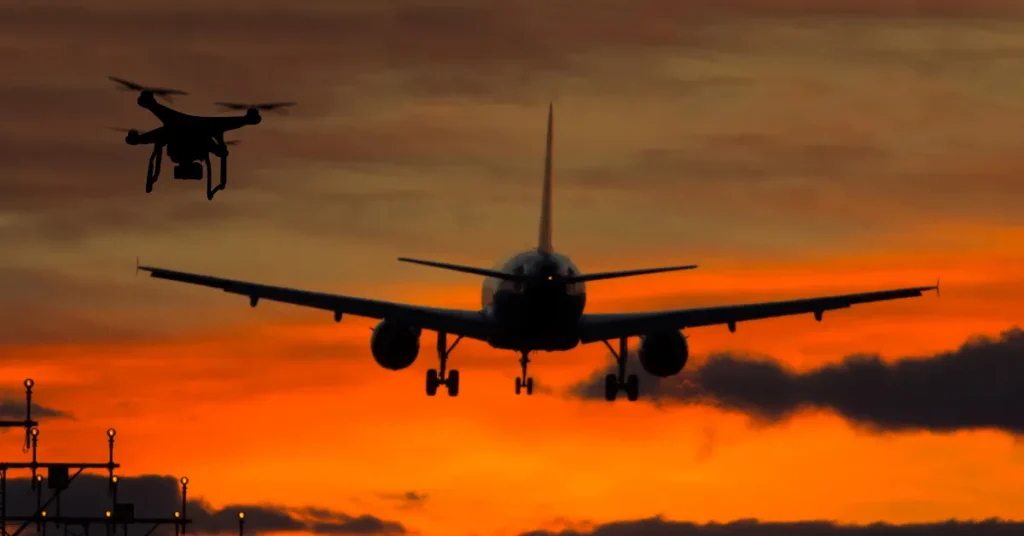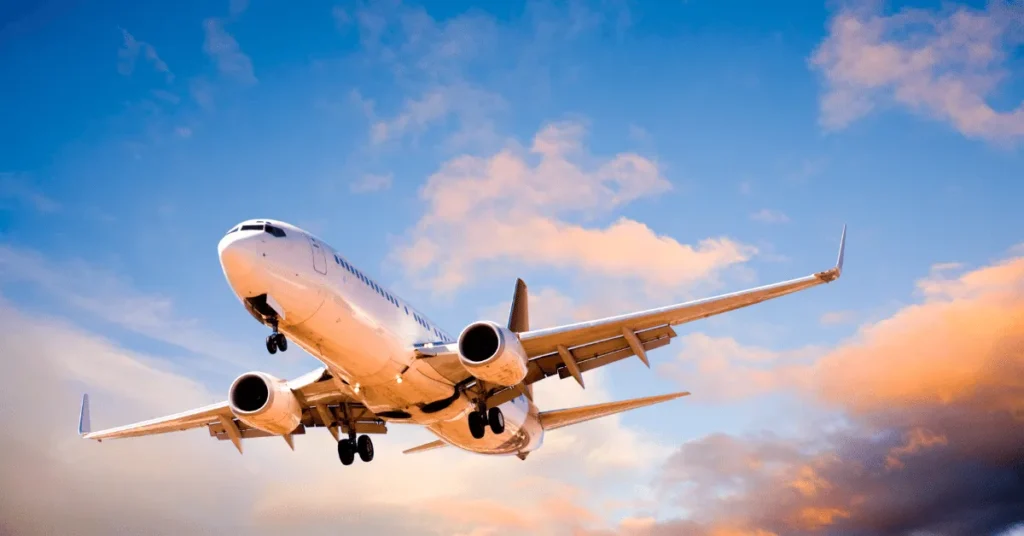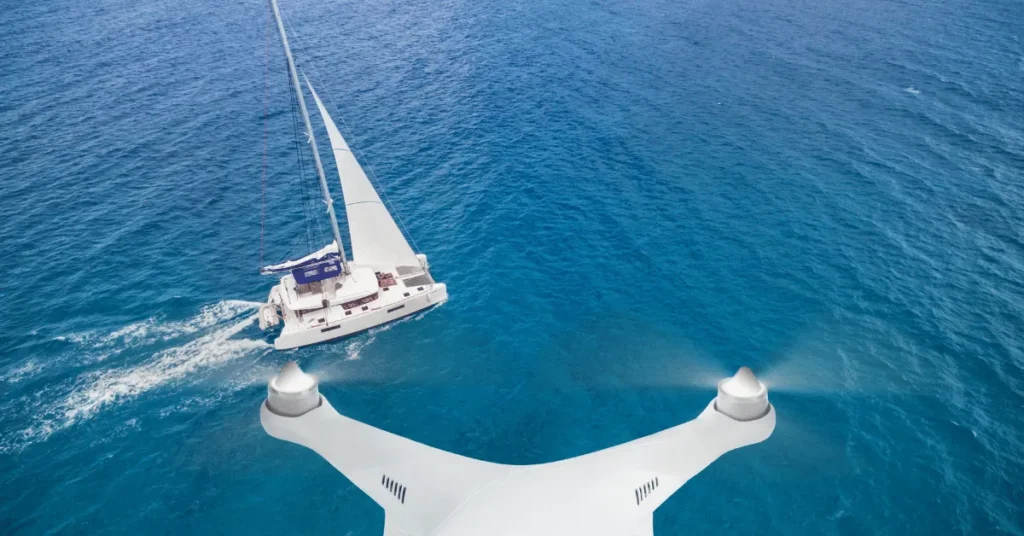Can Drones Fly Higher Than Planes? (Is It True?)

In a world where technology is constantly pushing boundaries, the question can drones fly higher than planes has piqued the curiosity of many.
“Can Drones Fly Higher Than Planes?” explores this intriguing topic, shedding light on the maximum altitudes attainable by both drones and airplanes.
We’ll delve into the factors that restrict their heights and even discuss the possibility of drones outpacing their larger counterparts in the skies. Join me on this journey as I unveil the potential applications and limitations of airborne technology in the 21st century.
Key Takeaways
- Understand Drone Limits: Drones can’t compete with airplanes in altitude.
- Adhere to Regulations: Follow drone altitude restrictions to ensure safety.
- Environmental Monitoring: High-flying drones aid in eco-data collection and conservation.
- Security and Surveillance: Drones offer high-altitude monitoring for security applications.
- Future Innovations: Ongoing advancements might extend drone altitude capabilities.
- Drones’ Unique Roles: Explore their versatility in photography, rescue, and more.
Table of contents
- Key Takeaways
- Can drones fly higher than planes?
- What is the maximum altitude for drones?
- What is the maximum altitude for airplanes?
- What are the factors that limit the altitude of drones and airplanes?
- Are there any drones that can fly higher than airplanes?
- What are the potential applications of drones that can fly higher than airplanes?
- Important FAQs related to can drones fly higher than planes?
- Final Thoughts
Can drones fly higher than planes?
With the rapid advancement of technology, drones have become increasingly popular in recent years. These small uncrewed aerial vehicles have captured the imagination of hobbyists, photographers, and even commercial industries. But can they fly higher than planes?
The short answer is no. Drones are not designed to fly at the same altitudes as planes. Most consumer drones have a maximum flight ceiling of around 400 feet to 500 feet. This is due to various safety regulations and airspace restrictions.
On the other hand, planes can fly at much higher altitudes. Commercial airliners typically cruise at altitudes ranging from 30,000 feet to 40,000 feet. This allows them to avoid weather systems, maintain fuel efficiency, and reduce noise pollution on the ground.

High-flying aircraft designers have created them to operate in extreme conditions and achieve incredible speeds.
So, although drones have their unique capabilities and applications, they are not meant to compete with planes in terms of altitude.
However, their versatility and maneuverability make them ideal for capturing stunning aerial footage, conducting search and rescue operations, and even delivering packages in certain areas.
What is the maximum altitude for drones?
When it comes to drones, one of the most common questions that arises is: What is the maximum altitude that a drone can reach? The answer to this question depends on various factors, including the type of drone and the regulations set by the governing bodies.
In general, consumer drones have a maximum altitude limit of around 400 feet or 120 meters. This limit is set by the Federal Aviation Administration (FAA) in the United States and is aimed at ensuring the safety of crewed aircraft in the airspace.
However, it’s important to note that there are exceptions to this rule. For instance, if you have a special waiver or permission from the FAA, you may be able to fly your drone above the 400-foot limit. Similarly, in some countries, the maximum altitude limit may vary.

Drone pilots must be aware of and abide by the altitude restrictions in their area. Flying a drone above the permitted altitude can not only lead to fines and penalties but also pose a serious risk to other aircraft in the airspace.
Additionally, it’s worth mentioning that some advanced drones, such as those used for commercial purposes or by professional photographers, may have a higher maximum altitude limit. Typically, advanced technology equips these drones, and various regulations apply to them.
What is the maximum altitude for airplanes?
Have you ever wondered how high airplanes can fly? The maximum altitude for airplanes varies depending on the type of aircraft and its capabilities.
Commercial airliners, such as Boeing 747 or Airbus A380, typically have a maximum cruising altitude of around 40,000 to 45,000 feet.
Large passenger planes are designed to operate efficiently at high altitudes, where the thinner air offers less resistance.
However, military aircraft and specialized jets can reach even higher altitudes. For instance, the famous Lockheed SR-71 Blackbird, a reconnaissance aircraft, could fly at altitudes of up to 85,000 feet.

This impressive altitude allowed the Blackbird to outrun enemy missiles and evade detection.
So, why can’t airplanes fly even higher? The main limitation is the lack of oxygen at higher altitudes. As an aircraft ascends, the air becomes thinner, making it harder for the engines to generate enough thrust.
Additionally, passengers and crew need to maintain the cabin pressure at a safe level.
Another factor is the temperature at high altitudes. As the aircraft climbs, the outside temperature drops significantly.
At extreme altitudes, the temperature can reach as low as -70 degrees Fahrenheit. This extreme cold poses challenges for the aircraft’s systems and materials.

In conclusion, the maximum altitude for airplanes depends on various factors, including the type of aircraft, its design, and the purpose it serves.
While commercial airliners typically cruise at around 40,000 to 45,000 feet, specialized military aircraft can reach even higher altitudes.
However, the lack of oxygen and extreme temperatures at high altitudes pose limitations on how airplanes can fly.
What are the factors that limit the altitude of drones and airplanes?
When it comes to flying high, several factors come into play and limit the altitude of drones and airplanes. Let’s take a closer look at some of these factors:
1. Engine Power
The power of the engines plays a crucial role in determining how high an aircraft can fly. Drones and airplanes need sufficient power to generate lift and overcome gravity. If the engines are not powerful enough, the aircraft will struggle to climb to higher altitudes.
2. Air Density
The density of the air decreases as altitude increases. This means that there is less air for the wings or rotors to generate lift. As a result, drones and airplanes may struggle to maintain lift at higher altitudes.
3. Weight and Payload
The weight of the aircraft and its payload also affect its ability to climb to higher altitudes. Heavier aircraft require more power to generate lift and may struggle to reach higher altitudes.

4. Temperature and Humidity
The temperature and humidity of the air can also impact the performance of drones and airplanes. Cold temperatures can reduce engine efficiency, while high humidity can affect the lift generated by the wings or rotors.
These are just a few of the factors that limit the altitude of drones and airplanes. Engineers and designers continuously work to overcome these limitations and push the boundaries of flight.
Are there any drones that can fly higher than airplanes?
With the rise in popularity of drones, many people wonder if these uncrewed aerial vehicles can reach altitudes higher than airplanes. While drones have certainly become more advanced and capable over the years, the answer to this question is no.
Commercial airplanes typically fly at altitudes ranging from 30,000 to 40,000 feet, which is far beyond the capabilities of most consumer-grade drones.
Usually, aviation authorities and the design of a drone limit the maximum altitude it can reach.
One of the main reasons why drones cannot fly higher than airplanes is due to safety concerns. Sophisticated systems equip airplanes, and trained pilots man them to navigate through airspace safely.

Drones, on the other hand, have limited range and endurance, making it risky for them to operate at high altitudes.
Additionally, flying drones at higher altitudes can pose a threat to crewed aircraft. Airspace authorities strictly regulate the airspace above a certain altitude to prevent collisions and ensure the safety of air travel.
Drones flying at altitudes higher than airplanes could potentially interfere with commercial flights and compromise the overall safety of the aviation industry.
Drone enthusiasts need to understand and adhere to the regulations set by aviation authorities.
These regulations are in place to ensure the safe operation of drones and prevent any potential risks to crewed aircraft.
While drones have revolutionized various industries and recreational activities, they are still limited in terms of their maximum altitude capabilities.
What are the potential applications of drones that can fly higher than airplanes?
Over the past few years, drones have become increasingly popular for various applications. From aerial photography to package delivery, these uncrewed aerial vehicles have revolutionized numerous industries. But what if drones could fly even higher than airplanes? The possibilities would be endless.
One potential application of high-flying drones is in the field of telecommunications.
With their ability to reach altitudes beyond what traditional aircraft can achieve, these drones could be used to provide internet connectivity to remote and underserved areas. Imagine a world where everyone has access to high-speed internet, regardless of their location.

Another area where high-flying drones could make a significant impact is in weather forecasting. By flying at higher altitudes, these drones could gather valuable data about the atmosphere and help improve the accuracy of weather predictions.
This could lead to better preparedness for severe weather events and potentially save lives.
Furthermore, high-flying drones could be used for environmental monitoring. With their extended range and altitude capabilities, these drones could collect data on air quality, deforestation, and wildlife populations.
This information could be used to develop more effective conservation strategies and protect our planet’s ecosystems.
Additionally, high-flying drones could play a crucial role in surveillance and security. By flying above the reach of conventional aircraft, these drones could provide enhanced monitoring capabilities for large areas, such as border control or disaster zones.
They could also be utilized for search and rescue missions, quickly covering vast areas and locating individuals in need of assistance.

As technology continues to advance, the potential applications of high-flying drones are only limited by our imagination.
From revolutionizing connectivity and weather forecasting to aiding in environmental conservation and security, these drones have the power to transform numerous industries and improve lives around the world.
Important FAQs related to can drones fly higher than planes?
Drones have unique capabilities, but they are not designed for commercial air travel. Large airliners have advantages in safety, range, and passenger capacity.
Yes, aviation authorities have set altitude limits for drones to ensure the safety of crewed aircraft. Regulations vary by country, and special waivers may be required for higher altitudes.
High-flying drones have potential applications in environmental monitoring. They can gather data on air quality, deforestation, and wildlife populations, aiding in conservation efforts.
High-flying drones could play a significant role in surveillance and security by providing enhanced monitoring capabilities for areas such as border control and disaster zones.
Drone technology is continuously advancing. Innovations in propulsion, materials, and energy sources may enable drones to reach higher altitudes in the future, unlocking new possibilities for aerial applications.
Final Thoughts
In the ever-evolving realm of aviation, the question of drones challenging the altitudes of planes has been intriguing.
While drones have their unique strengths, surpassing planes in altitude isn’t one of them. This article has unveiled the limits and possibilities in the world of airborne technology.
We invite you to share your thoughts on this fascinating topic. Do you believe in the potential for drones to soar higher in the future, or are there other frontiers they should explore?
Your insights matter, so drop a comment and share “Can Drones Fly Higher Than Planes?” with your fellow aviation enthusiasts. Let’s continue this conversation and explore the endless skies of innovation together.
Read More:







